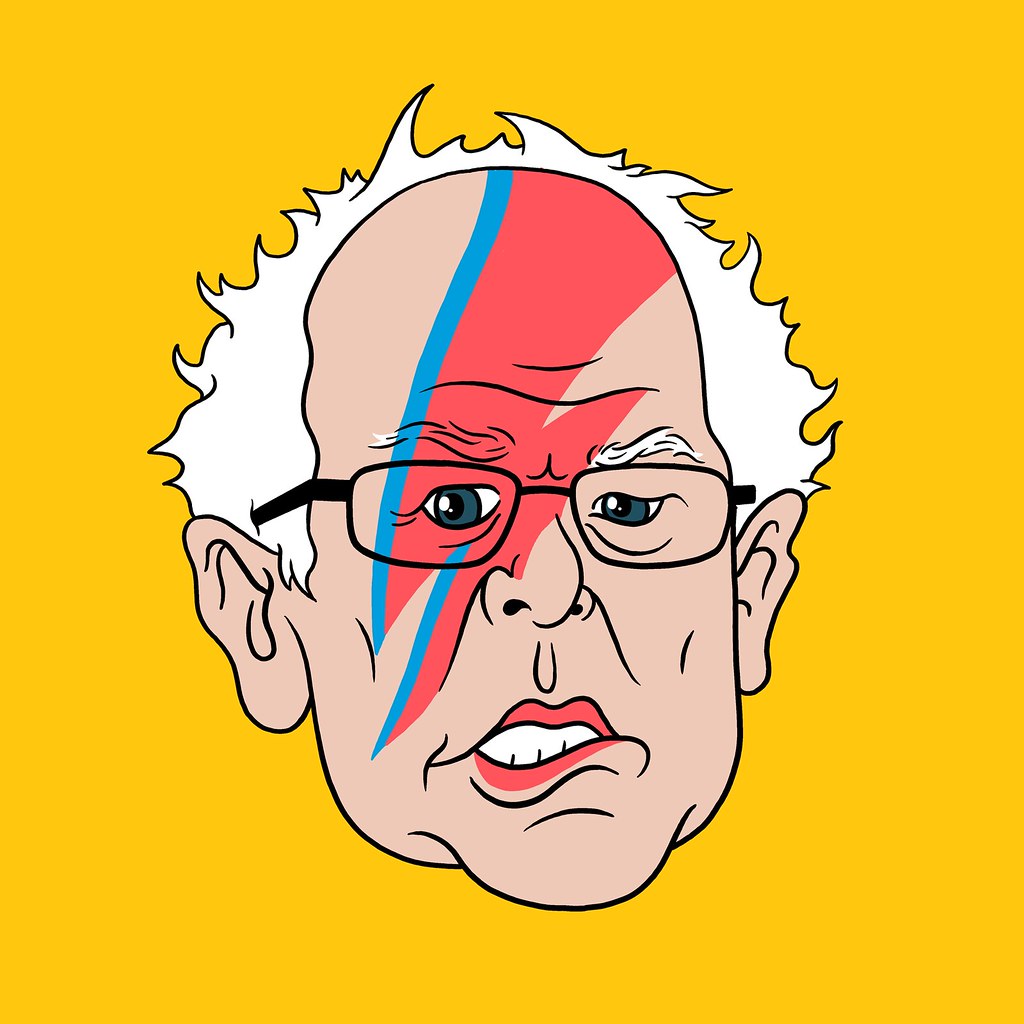Bernie Sanders is furious, probably.

The first rule of the wealth gap, is that no one can look upon the wealth gap.
It’s not that looking at the wealth gap isn’t allowed- it is allowed.
It’s just impossible.
Quite some time ago, possibly after Silicon Valley gave rise to the myriad wonders of modern technology, but perhaps before it sold that technology to build the Chinese Communist Party’s surveillance state, the wealth gap grew beyond the ability of the human eye to perceive it.
The wealth gap can no longer be accurately mapped on a chart, shown on a graph, or rendered in scale. It can’t be a visual during a TED Talk; it won’t fit on a Power Point slide.
The world’s wealthiest, the 1% of the 1%, have so much more money than everyone else on Earth, next to a bar on a graph representing the wealth of the wealthiest, the corresponding bar representing the rest of us would be an infinitesimal pixel too small to be viewed without a microscope.
If, on the other hand, you rendered all the world’s wealth not owned by the world’s ultra-wealthiest, into a bar visible to the human eye, let’s say the size of the period at the end of this sentence, the corresponding bar representing the world’s wealthiest would need to be as tall as the moon. Probably taller. The representation of the wealth of the world’s wealthiest would need to go up, and up, and up, and away into the clouds out of sight.
For one, you’d need a microscope to see it; for the other, a telescope. The wealth gap between rich and poor, as Sen. Bernie Sanders pointed out presciently 9 months ago, has become more obscene than ever.
All this was B.C.- before COVID-19 upended our lives and world economies.
Post-Covid, news that the world’s 10 wealthiest men doubled their wealth during these difficult times is somewhat difficult to countenance. Even the staunchest free-market capitalist feels a bit uneasy about this news.
Never before has the difference between the haves- the 1% of the 1% who doubled their wealth during a global pandemic- and the have-nots been so glaring: “Wealth of 10 richest men doubled in pandemic as 99% of incomes dropped.”
On the heels of this news, the recent call at the UN for a global wealth tax seems a tiny bit more reasonable, if not still unadvisable.
This strategy would present its own problems. Who would get the money? Which countries? Who would manage it? Who would enforce it?
Our current models for tackling extreme poverty and problems like hunger worldwide are neither foolproof, nor particularly scalable even if they were.
Since a global wealth tax presents more problems than it solves, like requiring a scary new global tax law enforcement apparatus, domestic taxation is a better solution.
Take Elon Musk. Offering to donate six billion dollars to feed the hungry is a drop in the bucket for him. He invented the Tesla and grew the multibillion dollar company from the ground up. Teslas aren’t exactly cheap either; like any other luxury car, they range from $50,000 to $150,000.
Why does anyone buying a Tesla need a huge tax break?
Elon Musk isn’t having any trouble selling cars. He doesn’t need these tax breaks to push Teslas. The fact that they are electric is nice and all, but the majority of the electricity produced in the U.S. still comes from burning fossil fuels- coal to be exact.
That wealthy people acquiring a Tesla will go ahead and take that tax break, even if they don’t need it, is a given. Of course they will. Wealthy people don’t pay accountants so that they can pay more in taxes than they have to. Changing the way the U.S. government taxes the ultra-wealthy and wealthy companies will require us all to first accept a hard truth.
More than anything, it is time for liberals and conservatives, Republicans and Democrats, to collectively admit that “globalism” is what made the wealth gap so much worse.
Globalism let American corporations- and others- cut costs by paying workers in other countries $30 per month, taking full advantage of lower labor standards and fewer onerous environmental regulations about industrial waste disposal.
“Globalism,” however nice the name and all it implies about being citizens of the world, was a terrible boondoggle that made the ultra rich far richer, hollowed out the middle class in the U.S. and exploited low-wage workers and natural resources in emerging nations worldwide.
Oh, and globalism gave us a 10,000 mile supply line dependent on petroleum.
Instead of spreading the wealth, and sharing in that wealth, as so-called globalism was sold to do, large corporations moved their manufacturing centers to places where they could manufacture goods more cheaply.
They capitalized on low labor standards, and lax environmental standards, to mass produce as cheaply as possible, without passing much of that savings on to everyone else.
Market share increased, as did stock prices. CEO’s and executives got massive bonuses, fat paychecks and enough golden parachutes to make it down safely from Neptune.
And the wealth gap increased.
The purpose of globalism, one supposes, was not to make the 1% of the 1% twice as obscenely rich as they were- after a pandemic.
If the purpose was to export good-paying American manufacturing jobs to other countries, for the benefit of those countries, it failed.
Instead, globalism offered little beyond exploitation, profiteering and a wealth gap wider than ever before.
(contributing writer, Brooke Bell)